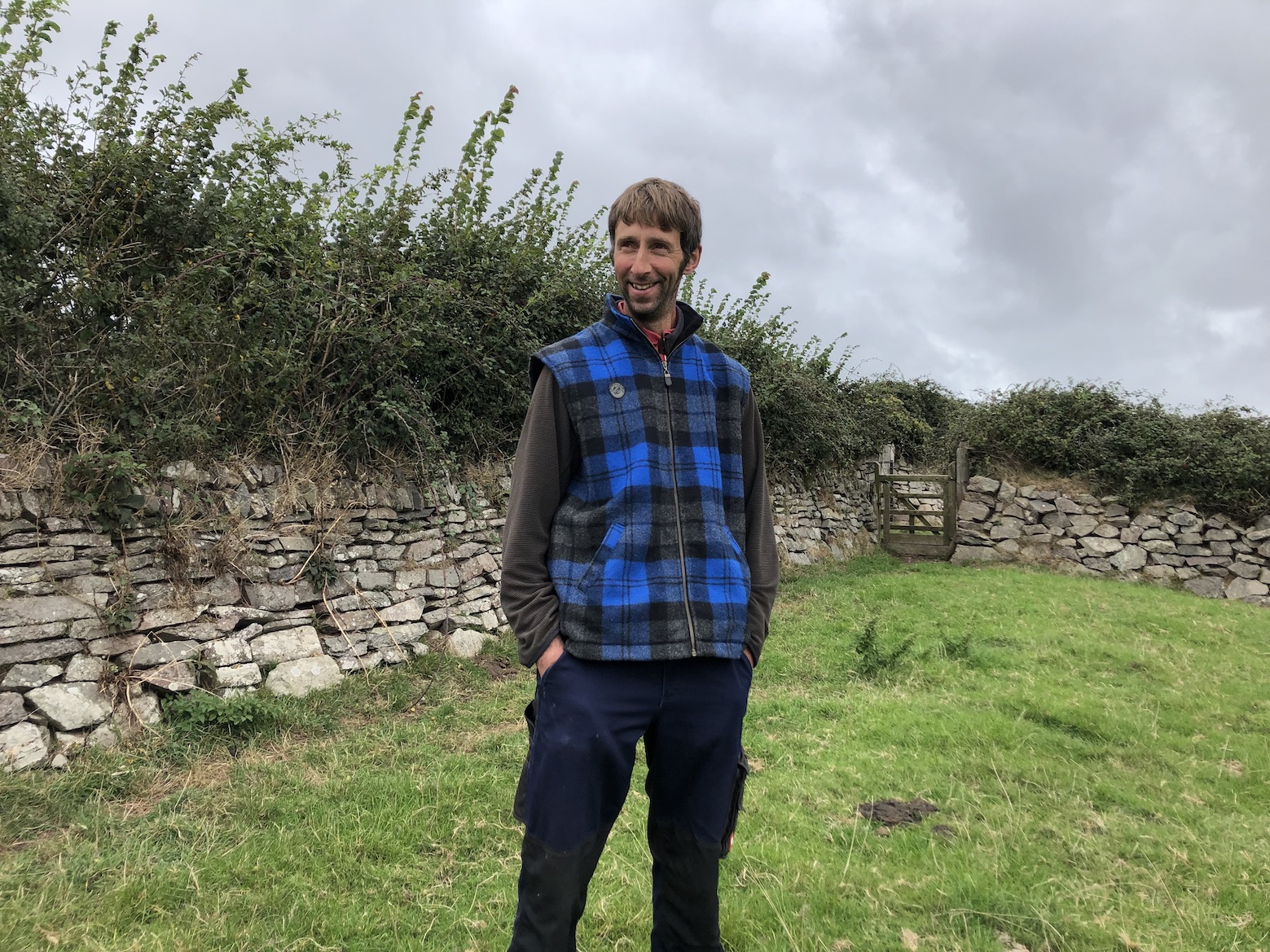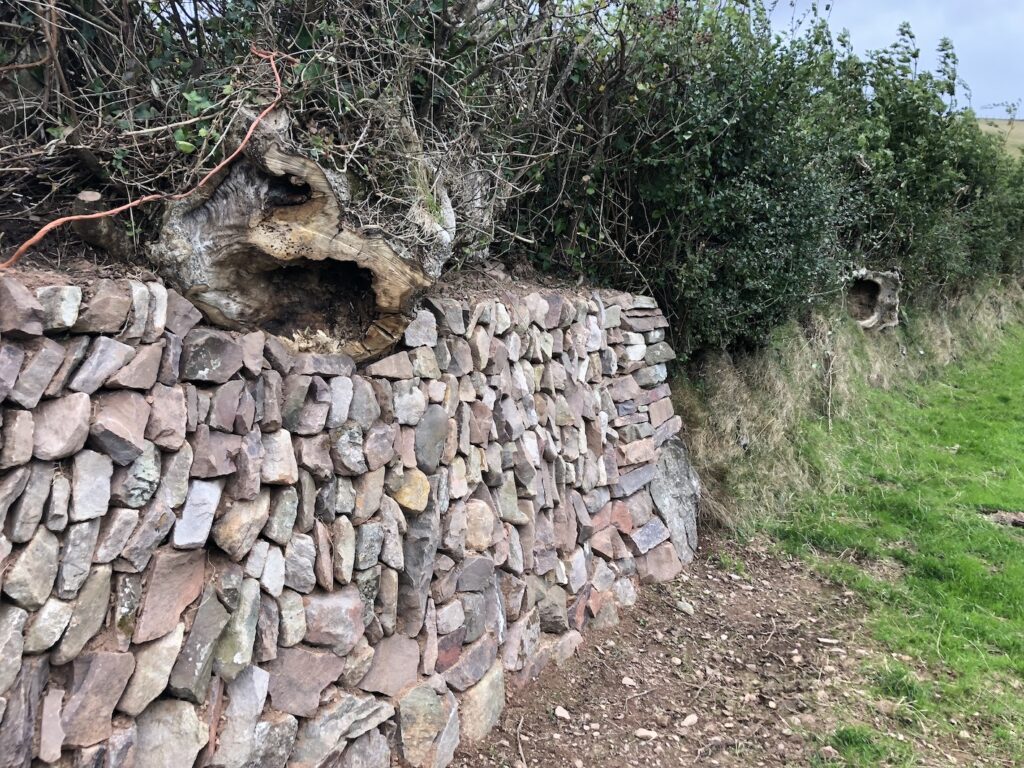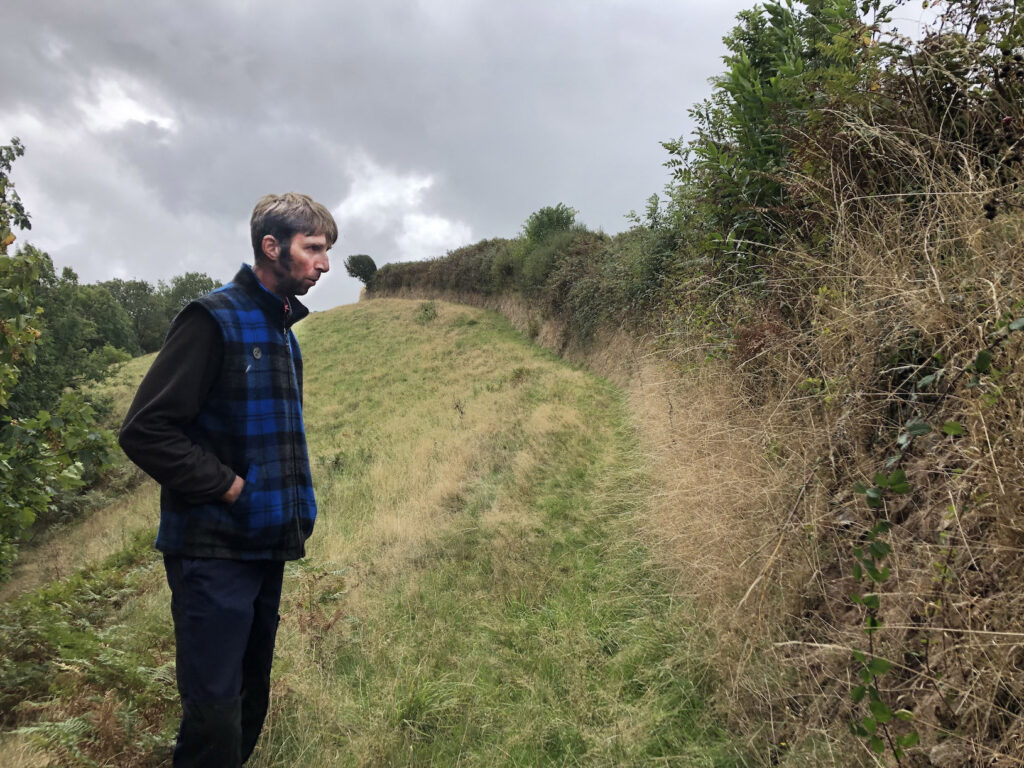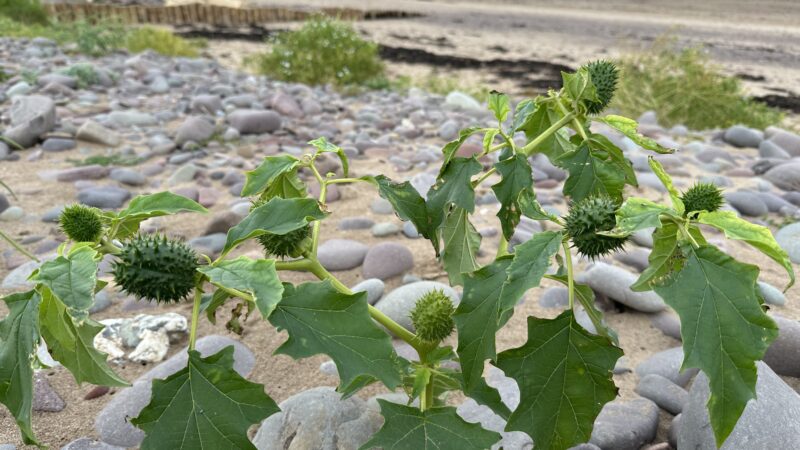Building Exmoor walls at Yarner Farm

On the edge of the moor above Porlock, overlooking the mercurial grey tides of the Bristol Channel, lie a few remote farmsteads. Their fields are laced into the precipitous hillsides, with earthen banks faced with stone and topped with dense hedges. For centuries, these walls have been the traditional Exmoor way of providing a two-in-one stock-proof fence and shelter belt – much needed in a place often pummelled by gales, heavy rain and snow.
Exmoor walls are made by digging down to hard ground and laying two parallel lines of rocks. The wall is built up from these foundations in courses using smaller “litter stone” collected loose from the land to back-fill behind the rows. The bigger stones are usually laid flat in the bottom third of the wall, so that the narrower side forms the outer wall. The middle is filled with soil and beaten solid with a sledgehammer. The finished product is about 5ft 6in high and almost nine feet wide at the base.

Almost all the structures along this coastal edge were built by generations of the Richards family. Their land includes Ash Farm, where it is thought Samuel Taylor Coleridge wrote his strange, incantatory poem ‘Kubla Khan’, and Yarner Farm next door.
Yarner belongs to John Richards, who has more than 12 miles of wall to maintain. Occasionally he plants a holly, but his hedges are otherwise a self-seeded mix of blackthorn, elder, bramble, ash and willow. Every 15 years or so, when they get too high, he cuts and lays them flat. This is because full-grown trees would sway too much in the wind, eventually shaking out soil and rocks and undermining the bank.
Some of John’s walls are hundreds of years old, but many have been built since 1940. One particularly special wall was made in the mid-1990s. John’s grandfather was halfway through building it when he died at the age of 79. John took on the farm and pledged to finish the job as a tribute. It took 40 days of hard, muscle-wrenching work over six months. Every stone had to be carried by hand down the steep slope and wrestled into position.
“I was in my prime then,” John says ruefully. A quarter of a century later, the wall is just coming to maturity, lounging along the hill contours in a splendid pelt of grasses.

This is a slightly amended version of an article first published by The Guardian’s Country Diary column on 6 October 2022. With many thanks to John Richards of Yarner Farm.





